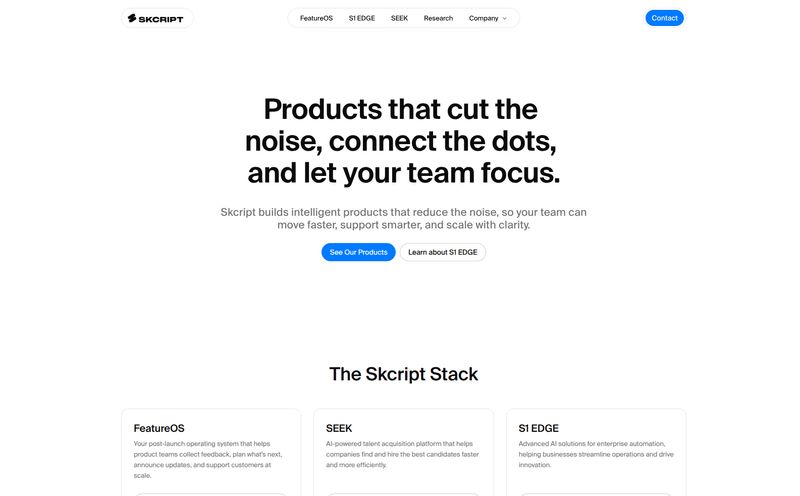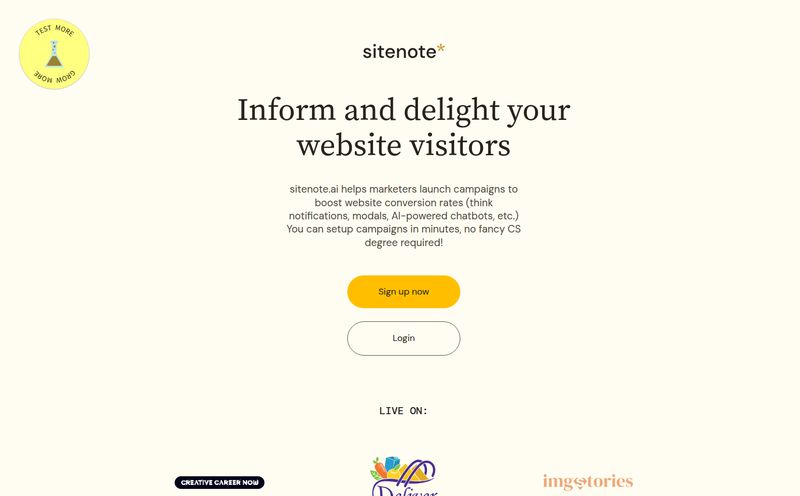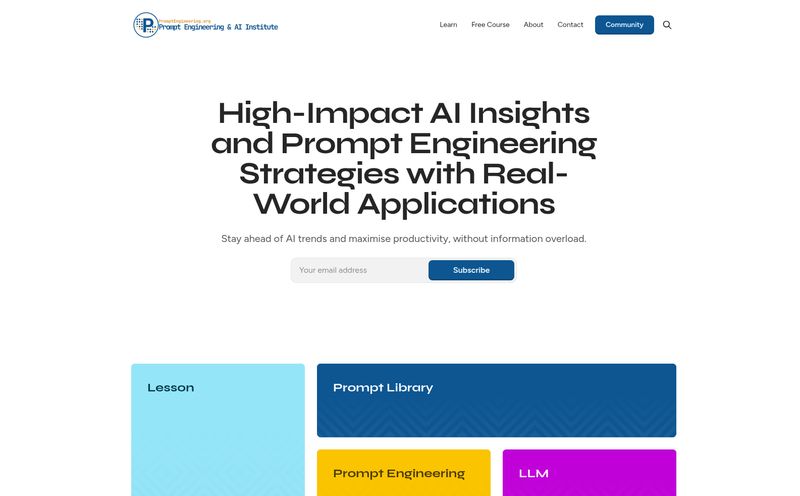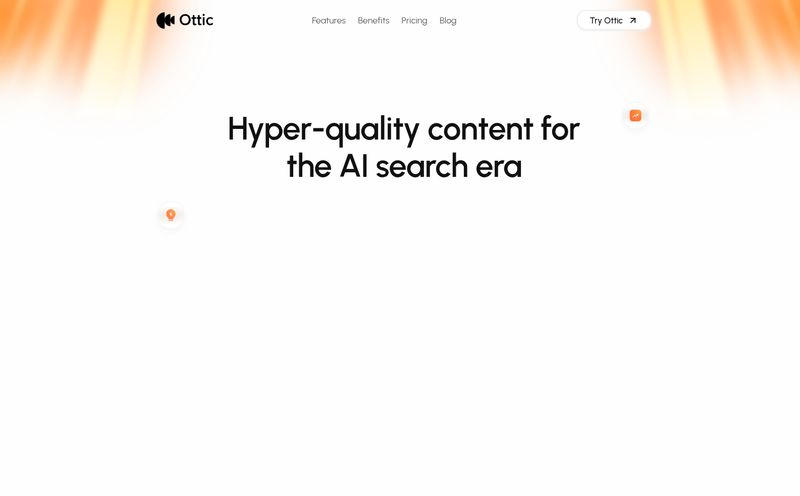Let’s have a little heart-to-heart. You’ve been there. I’ve been there. We’ve all been there. You have a burning question about your business. Something simple, like, “Which marketing channel brought in the most paying customers last quarter?” or “What’s the drop-off rate on our new checkout page?” You know the answer is buried somewhere in the company database, a digital treasure chest of ones and zeros.
But getting to it? That’s another story. It means filing a ticket with the data team, waiting three days for an overworked analyst to write a complex SQL query, and then getting a spreadsheet back that raises more questions than it answers. The whole process is a momentum killer. It’s like trying to have a conversation where every reply takes a week. Frustrating, right?
Well, I’ve been hearing a lot of buzz lately about a new breed of tools aiming to smash that bottleneck. One that caught my eye is called DataInsight. Their pitch is simple and bold: an AI data analyst that lets you talk to your database in plain English. No code, no waiting, just answers. Sounds too good to be true? I thought so too. So, I did what any self-respecting SEO and traffic geek would do—I dug in to see if it’s the real deal or just more marketing fluff.
So, What is DataInsight, Really?
Forget the fancy jargon for a second. At its core, DataInsight is a translator. It’s the universal translator from Star Trek, but for your data. You speak to it in your language (“Hey DataInsight, show me a graph of user signups by country for this year”), and it speaks to your database in its language (all that `SELECT FROM...` stuff we’re trying to avoid). Then, it translates the database's reply back into something you can actually use: a clean chart, a simple table, an instant insight.
It’s built for the people on the front lines—the product managers, the marketers, the startup founders who have to be a little bit of everything. The people who need data to make decisions now, not next Tuesday. It turns data analysis from a highly specialized, gatekept skill into a simple conversation. I've always felt the best tools are the ones that democratize access to powerful things, and this feels like a step in that direction.
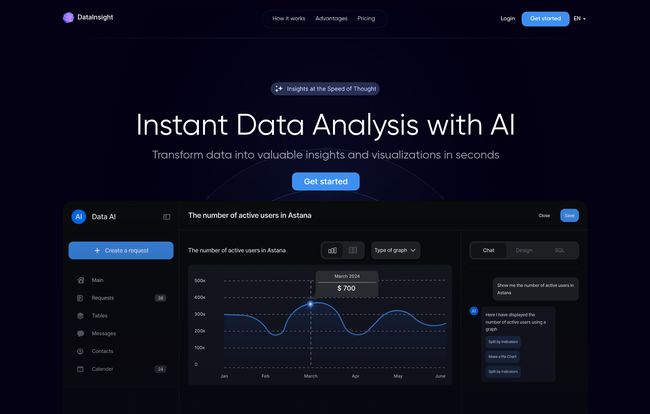
Visit DatAI
Getting Started: A Walkthrough of the Process
The whole thing is designed to be ridiculously simple, which I appreciate. There’s no week-long implementation phase or mandatory training course. It boils down to a few logical steps.
Connecting Your Lifeline (The Database)
First things first, you have to hook it up to your data source. This was the part I was most skeptical about, because this is often where things get messy. But according to their docs, they support the big players you’d expect: Postgres, MySQL, Snowflake, BigQuery, and Redshift. For most modern tech companies, that covers the bases. You connect it up, and the AI starts to get familiar with your data structure, or schema.
The Magic of Asking Plain Questions
This is the main event. Once connected, you get a simple, chat-like interface. You just type your question. No more worrying about the exact table name or whether you need a LEFT JOIN or an INNER JOIN. You can ask things like:
- “What was our monthly recurring revenue in Q2?”
- “Compare customer lifetime value for users from the US vs. Canada.”
- “Show me a list of the top 10 most viewed product pages last week.”
The AI language model behind the scenes figures out your intent and generates the necessary query on the fly. It’s pretty incredible to watch. A process that used to involve at least two people and a ton of back-and-forth now happens in seconds.
From Raw Numbers to Beautiful Stories
An answer is one thing, but a story is another. DataInsight doesn’t just spit back a number. It gives you the option to see the result as a graph or a table. This is huge. Being able to instantly visualize a trend makes it a thousand times more impactful. And for all of us who live and die by PowerPoint and Google Slides, it has an easy export to Excel. Thank goodness. No more awkward copy-pasting that breaks all the formatting.
The Real Advantages of an AI Analyst
Okay, so it's fast and easy. But what does that actually mean for a business? The benefits are more than just convenience. For one, the speed is a genuine competitive advantage. Their site claims it can speed up processes 5x, and honestly, that feels conservative. When you can test a hypothesis in 30 seconds instead of 3 days, you can iterate and learn at a pace your competitors just can’t match.
It also breaks down knowledge silos. Data becomes a resource for everyone, not just the engineering team. A marketing manager can self-serve attribution data. A product manager can track feature adoption in real-time. This creates a more data-informed culture, and in my experience, that's where real growth comes from.
And of course, there’s the security question. Handing over the keys to your database is a big deal. DataInsight says they use strong encryption to keep everything locked down, which is the absolute minimum I'd expect. For any growing business, knowing your data is both accessible and secure is a massive weight off your shoulders.
Let’s Talk Turkey: DataInsight Pricing and Value
This is where the rubber meets the road. All the cool features in the world don’t matter if you can’t afford them. DataInsight has a straightforward pricing model: $200 USD per month.
Now, is that cheap? For a college student with a side-hustle, maybe not. But let’s put it in perspective. On their own site, they compare this to the average salary of a product analyst, which they peg at over $128,000 a year. Suddenly, $200 a month to get a huge chunk of that analyst's function on-demand seems like an absolute steal. You’re not replacing a human analyst entirely—we’ll get to that—but you’re augmenting your team in a massive way for a fraction of the cost.
Even better, they have a pretty sweet introductory offer:
Try DataInsight free for the first month, and then get 50% off for the next three months.This makes it a no-brainer to at least take it for a spin and see if it fits your workflow.
The Other Side of the Coin (Potential Downsides)
No tool is perfect, and any review that claims otherwise is probably an ad. I would be remiss if I didn't mention a couple of things to keep in mind. The first is obvious: the subscription cost. While it's great value compared to a salary, $2,400 a year is still an expense that needs to be justified for smaller, bootstrapped operations.
The second, and more nuanced point, is the reliance on AI accuracy. Let’s be real, AI is amazing, but it's not a magical oracle. It can misunderstand a poorly phrased question or miss a subtle piece of context about your business. You still need a human in the loop. You need someone with domain knowledge to look at the results and ask, “Does this number make sense?” The tool is a powerful assistant, not a replacement for critical thinking. Don’t just blindly trust the output without a gut check.
Who Should Use DataInsight?
So, who is this actually for? In my opinion, the sweet spot is for small to medium-sized businesses, especially product and marketing teams who are constantly held back by a lack of data engineering resources. If you're a founder who needs to move fast or a PM who wants to be more self-sufficient, this could be a game-changer.
Who should skip it? If you're a massive enterprise with a dedicated team of 20 data scientists who live and breathe complex modeling in Python, this might be too simple for your needs. It's not meant to replace a full-blown data science platform, its meant to solve the 90% of business questions that are relatively straightforward but currently painful to answer.
Final Thoughts from a Fellow Tech Geek
I’ve seen a lot of tools come and go, many promising to revolutionize the way we work. Most of them fall short. But I have to say, DataInsight feels different. It’s not trying to do everything; it’s trying to do one thing perfectly: make data accessible to everyone. By removing the SQL barrier, it empowers the people with the business context to get their own answers.
It won't replace your talented data analysts—it will free them up from answering repetitive questions so they can focus on the deeper, more strategic work. And for that reason alone, I think it’s a tool worth watching very, very closely.
Frequently Asked Questions
How does DataInsight actually work?
It's a clever mix of a user-friendly interface and a powerful AI backend. You connect your database, then you ask questions in regular English. The AI translates your question into a formal database query (SQL), runs it, and then presents the answer to you as a number, table, or graph. It’s all about removing the technical barrier between you and your data.
Is my company's data safe with DataInsight?
Security is a top concern, and they seem to take it seriously. DataInsight uses encryption to protect your information both in transit and at rest. While you should always do your own due diligence, they've implemented standard security protocols to ensure your data remains confidential.
Can I export the data for my reports?
Yes, absolutely. This is one of its most practical features. You can easily export your analyses and visualizations into formats like Excel, which is perfect for dropping into presentations, reports, or sharing with team members who aren't on the platform.
What's the deal with the pricing and trial period?
The standard plan is $200 per month. They offer a one-month free trial so you can test it out with your own data. If you decide to continue after the trial, they also provide a 50% discount for the following three months, which is a great way to ease into the subscription.
So, does this tool completely replace my data analyst?
No, and it's not designed to. Think of it as a force multiplier. It handles the frequent, day-to-day data queries, freeing up your human analyst to focus on more complex, strategic projects that require deep statistical knowledge and business acumen. It makes your existing team more efficient, it doesnt make them obsolete.
What specific databases can I connect to DataInsight?
It connects to a solid range of popular modern databases. The list includes PostgreSQL, MySQL, Snowflake, Google BigQuery, and Amazon Redshift. This covers the infrastructure for a vast majority of tech companies and startups.
Conclusion
The bottom line is this: DataInsight is a seriously impressive tool that addresses a very real and persistent pain point for countless businesses. By bridging the gap between business questions and database answers, it has the potential to fundamentally change how teams operate, making them faster, more agile, and more intelligent. If you’ve ever found yourself frustrated by the data bottleneck, you owe it to yourself to give their free trial a shot. You might just find your new favorite coworker is an AI.
Reference and Sources
- DataInsight Official Website (Note: This is a placeholder URL based on the product name)
